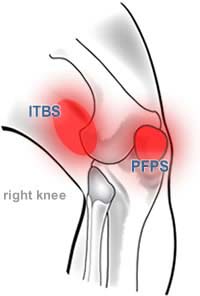Expert Tips and Tricks to survive the Kokoda Challenge
Blisters, ITB and Chafing.
Scott Whimpey- Director of First Aid Accident & Emergency (FAAE) and former Team member of Nike Hammer, has an astonishing fastest time over the gruelling 96km event in 11:20min.
He has won the event 4 times and never finished without a full team, Scott taken the time to put together the essential tips on how to survive the 2021 Kokoda Challenge.
It’s an event that sparks a mixture of fear and devotion on the Gold Coast. The monstrous 96km team trek through the Gold Coast hinterland that is The Kokoda Challenge is not your standard endurance event. Teams of 4 not only have to slog it out over the torturous 96km track within a 39 hour period (with their sanity intact), they also have to put in months of pre-training in order to give themselves the best chance of finishing this event.
Injuries are rampant and are the main reason many competitors don’t finish the event: chafing, blisters and ITB Syndrome are the main causes of participants pulling out, and after so many months spent preparing for the big day it can feel especially demoralising to have to pull out.
The main thing competitors have to focus on: Prevention is the cure!
Common injuries that will make your Kokoda Challenge experience 1000 times harder.
Our director, Scott Whimpey, is a multiple past Kokoda Challenge competitor and previous Kokoda Challenge winner. Through his combination of first aid and medical expertise plus personal experience out on the track, he’s prepared to give you the info you need to give you the best chance of survival in the event.
BLISTERS:
The dreaded blister. Something that starts out as just a little niggle, but a few hours in it makes the surface of your feet feel like they are on fire. The best advice we can give is that you want to prepare your feet before every training session and the event with the staple of blister prevention: strapping tape.
Taping your feet up correctly greatly minimises your chance of blisters developing. Even creek crossings are a cinch as the strapping tape is waterproof. After the Waterfall Circuit, change out your socks/shoes and away you go with your tape still firmly in place! You never have to reapply either – the tape will stay in place the entire event!
CHAFING:
One of the other dreaded ‘common’ injuries sustained by Kokoda Challenge competitors is chafing. Similar to blisters, a small annoyance can quickly escalate to where it feels like you’ve strapped on a cactus between your legs and lit it on fire. Competitors then develop the ‘cowboy’ walk, where it looks like they have been riding a horse too long. If it doesn’t outright knock you out of the event, it can dramatically increase the time you are out on the track, wishing for sweet unconsciousness with every step.
The best way to manage chafing is through products like Skin Slick, a waterproof spray-on lubricant that lasts for several hours and comes in a convenient small can that can be thrown in your pack to reapply along the way. Having the right clothing is also vital to chafing prevention – baggy pants and cotton are going to be your downfall. Go skin-tight and own it.
ITB:
This is the most serious of the common Kokoda Challenge injuries and is unfortunately extremely painful. ITB (iliotibial friction syndrome) is a repetitive strain injury that is caused by the numerous hills throughout the event. Most people seem to think that this injury is caused by constantly climbing hills, whereas in actual fact it’s the constant descending that does the damage. Going down steep slopes puts tremendous force and strain on your knees and after a while, the muscle imbalance produces friction, which leads to intense pain in the knees.
As with the other injuries, prevention is better than cure. Strapping the knees properly and giving them additional support will help to alleviate the onset of ITB, along with the use of walking poles. Unfortunately, ITB cannot be completely prevented unless you bring a sled and slide your way down those hills and once it’s started it only gets worse the longer you are on your feet. Minimising the risk via the methods above will go a long way to ensuring you get across that finish line, after which you can finally rest!




